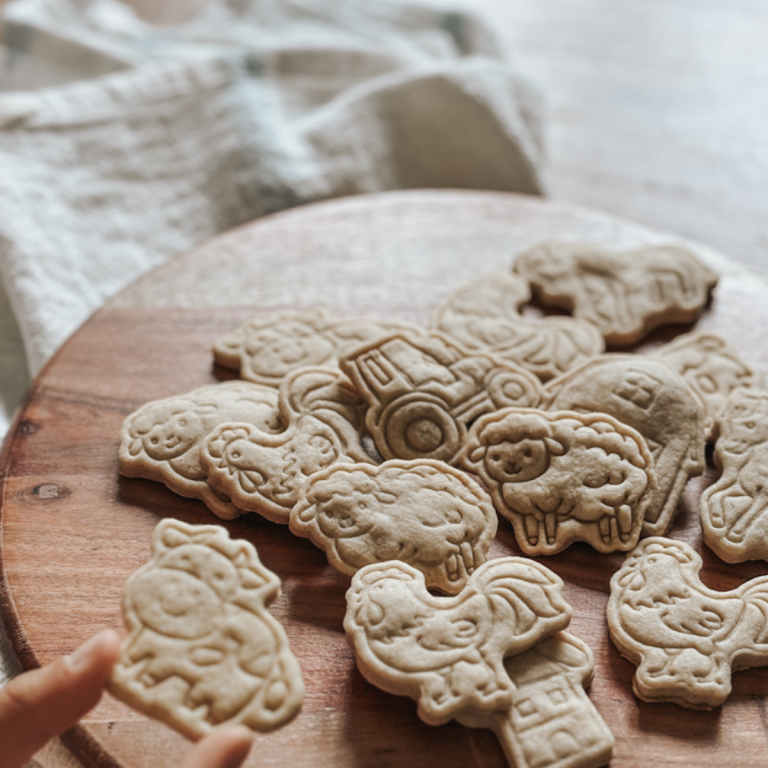Where To Get Raw Milk
Wondering where to get raw milk? Discover how to easily find raw milk near you with our comprehensive guide!

From local farms and farmers’ markets to online resources and directories, this post will help you navigate the best sources for fresh, high-quality raw milk. Learn about the benefits, safety considerations, and legal aspects of raw milk to make informed choices for your family.
My own journey with raw milk began just a few months ago. After working to purge processed foods from our home, changing the way we consume milk seemed like the next step. We realized that even though we eat mostly whole foods and have made changes in the bread and snack options we choose, the conventional milk we were buying still didn’t align with our health goals. I wanted something more natural and nourishing, which led me to explore raw milk as a viable option.
Incorporating raw milk into our diet felt like a natural progression after transitioning to homemade sourdough bread, which has become a staple in our home. The connection between raw milk and sourdough is particularly exciting. Both are products of traditional methods that prioritize quality ingredients and health benefits.
Furthermore, I decided to focus on buying local raw milk. Supporting local farmers not only helps to ensure that the milk is fresh, but it also strengthens our community. Knowing where our food comes from and how it is produced is important to us, and sourcing local raw milk aligns with our values.
By making these choices, I feel more empowered about the food we consume as a family. Each step, from selecting high-quality raw milk to creating delicious sourdough bread, brings us closer to a lifestyle centered around health, flavor, and responsibility. This journey has not only transformed our diet but has also deepened our appreciation for the food we eat and the farmers who produce it.

Disclaimer: The information presented here is not intended for the diagnosis or treatment of any health issue or disease. Individuals seeking personalized medical advice should consult a licensed healthcare professional. Always consult your doctor or a qualified health provider about any medical concerns you may have.
What Is Raw Milk?
Simply put, raw milk is milk that’s straight from the cow. It’s not pasteurized or homogenized which are processes that most milk you purchase from the grocery store have gone through. Of course, you’ve read those words before but you may not know what it means.
Milk that’s been pasteurized has been heated to a high temperature for a minimum of 15 minutes. The main goal of pasteurization is to kill harmful bacteria and pathogens that can cause illnesses. This process makes the milk “safer” but also changes its flavor and some of its nutrients
Homogenized milk has gone through a process that breaks down the fat molecules so that the cream no longer rises to the top but instead is distributed throughout the milk.
In summary, pasteurization is about making milk safe by killing bad bacteria, while homogenization is about changing the texture of the milk so that the fat is evenly mixed in. Both processes are commonly used in regular milk but are not part of raw milk.
Understanding Raw Milk
Chances are if you’ve been searching for raw milk you’ve already done your research BUT, if you have questions like…
I want to invite you to download my free Beginners Guide to Raw Milk!

Is Raw Milk Legal in My State?
Before you can begin searching for raw milk and raw milk products, it’s important to be informed of state laws regarding the sale of raw milk. You should know that while the FDA bans interstate sales of raw milk, each state does make its own laws regarding the sale of raw milk.
In order to find the raw milk laws in your state, simply check out the Raw Milk Nation map. Once you click, you’ll see a color-coded map of the United States. Each color represents a different category of legality for raw milk sales.
There are 6 categories of raw dairy access…
- retail sales are legal
- on-farm sales are legal meaning raw milk can be sold at farmer’s markets, by delivery, or on the farm.
- herdshares or cow shares are legal
- no laws on herdshares which means the state knows it’s happening but hasn’t stopped it.
- raw milk can be sold for animal consumption or pet consumption
- sales are illegal
Due to new studies and information, laws on raw milk sales and the consumption of raw milk are changing on a regular basis. Be sure you are looking at the most current information when doing your own research.

Where Can I Find It?
Once you’ve found information regarding state laws, you’ll need to decide how you will source your raw milk. There are several options to consider, each offering unique benefits. By exploring these avenues, you can find a reliable and safe source of raw milk that aligns with your values and lifestyle.
Retail Stores: If you’re one of the lucky ones who live in a state where fresh raw milk can be sold in retail establishments, all you’ll need to do is check the shelves of your local grocery store. Stores that specialize in organic and local products are more likely to carry raw milk.
Farm Sales: Local farms often sell raw milk directly to consumers, allowing you to connect with the source and learn about their farming practices.
- Farmers Market: If there’s one thing our family loves to do on a Saturday morning, it’s meander around a local farmers market with coffee in hand. This is a great way to shop for local fruits, vegetables, and meat while also picking up a gallon or two of raw milk. The only downside is that many farmer’s markets are seasonal and aren’t open year-round.
- Local Farm Pickup: In my opinion, this is the best option. A quick Facebook search will get you connected with a local farm. You can also visit Raw Milk Finder to search your state for a local raw milk farmer. Visiting the farm where you plan to purchase fresh milk means you can check out the cleanliness of the operation and make connections with real people who are supplying real food.
- Delivery: While this method of obtaining raw milk is more challenging, you may be able to find a farm that delivers to your door. This is more prevalent in large cities. However, I have found that some small dairies deliver to your door even in more rural areas.
Herd Shares: For those looking for a more community-oriented approach, herd shares offer an opportunity to co-own a portion of a dairy herd. This gives you access to fresh raw milk while supporting local agriculture. A herd share or cow share is a way for people to share ownership of a dairy cow or group of cows. This allows them to get fresh, raw milk without buying it directly from a farm.
This is a great way for people to enjoy fresh milk while supporting local farms and getting to know where their food comes from. To find a herd share agreement near you, search Facebook groups, contact local farms, or search the Real Milk site.

Raw Milk Is Illegal In My State
If you happen to live in a state that does not allow raw milk producers to sell their products directly to consumers, there are alternatives!
- Buy Organic: Organic milk comes from cows that are raised on organic farms. This means the farmers don’t use synthetic pesticides or fertilizers on the crops that the cows eat. They also avoid giving the cows antibiotics and growth hormones.
- Purchase Grass-fed Milk: Grass-fed milk comes from cows that primarily eat grass. This means their main food is grass instead of grains. Grass fed cows can be raised on organic farms, but not all grass-fed milk is organic.
- Purchase dairy products at a small dairy farm: You may not be able to get raw milk, but you can still purchase pasteurized-homogenized milk from a local dairy farm. Get to know your local farmers and get fresher milk.
- Get your own family milk cow: This may sound crazy but if you have the space and resources, you might consider purchasing your own cow. For more info, this article may be helpful.

Considerations When Purchasing
Safety: Improperly-produced raw milk can be dangerous so it’s important to do some research.
Here’s a quick checklist of things to look for in a raw milk dairy:
- make sure the cows look healthy
- ask for a tour of the milking area
- do the cows have an outside space and sunshine
- ask about the milk chilling process
A1 vs. A2 milk: A1 and A2 milk are two types of cow’s milk that differ based on the proteins they contain. Some people find A1 milk harder to digest and it may cause discomfort, such as bloating or gas. A2 milk usually comes from specific breeds of cows, like Jerseys and Guernseys. Many people find A2 milk easier to digest and experience fewer digestive issues when consuming it.
Cost and alternatives: Raw milk is quite a bit more expensive than processed milk. We currently pay 10-12 dollars per gallon of milk and our large family consumes so much milk. I realize that most families cannot afford that price. It’s a choice our family makes and we sacrifice in other areas because milk quality is a priority. However, we often purchase organic milk from the grocery store. My advice is to start somewhere and take small steps towards purging your home of processed foods.
In Conclusion
Exploring local options for sourcing raw milk not only provides you with fresh, nutritious products but also connects you with community resources and local farmers who share your passion for quality food. By engaging with these resources, you can learn more about the benefits of raw milk, understand safe practices, and support sustainable agriculture in your area.
Don’t forget to download our free Beginner’s Guide to Raw Milk. The guide offers valuable insights and tips to help you on your journey.

I hope you’ve found this information helpful in your search for raw milk. I would love for you to share your experience and tips for finding raw milk in the comments.





